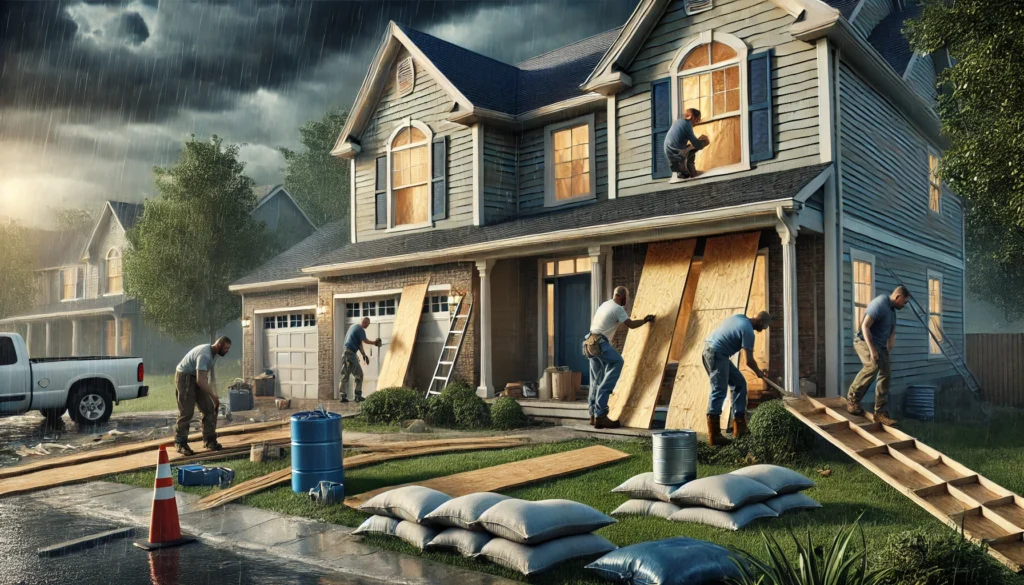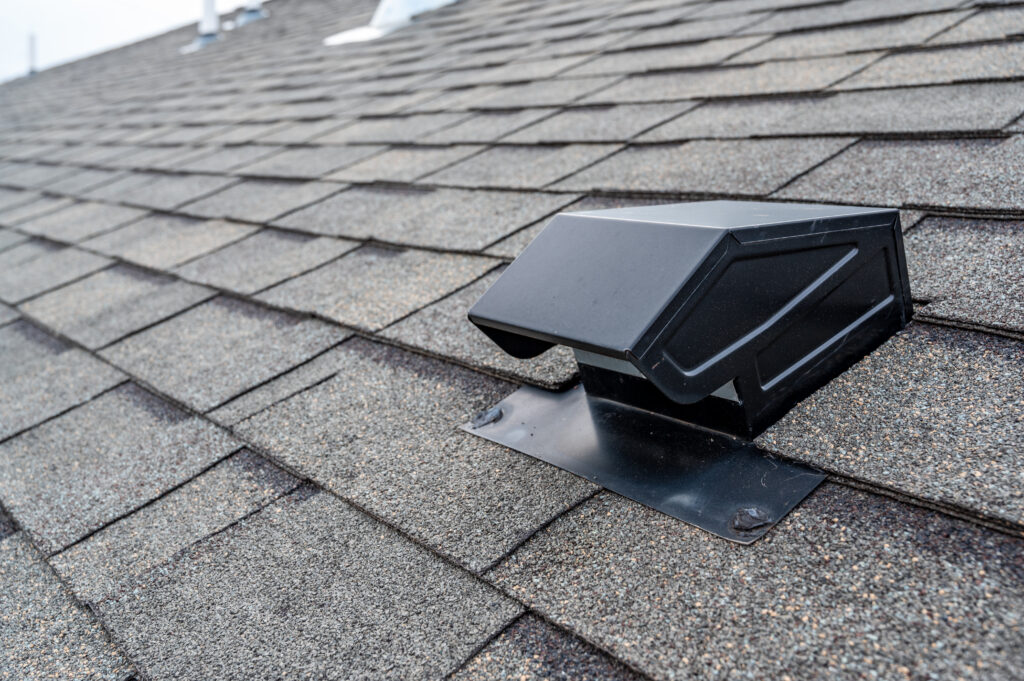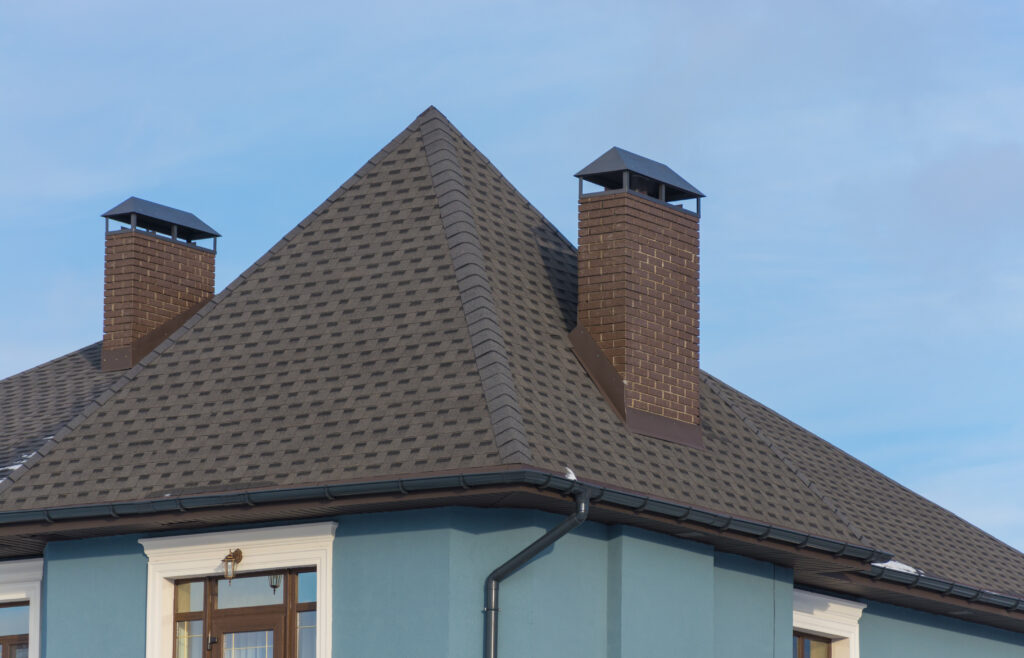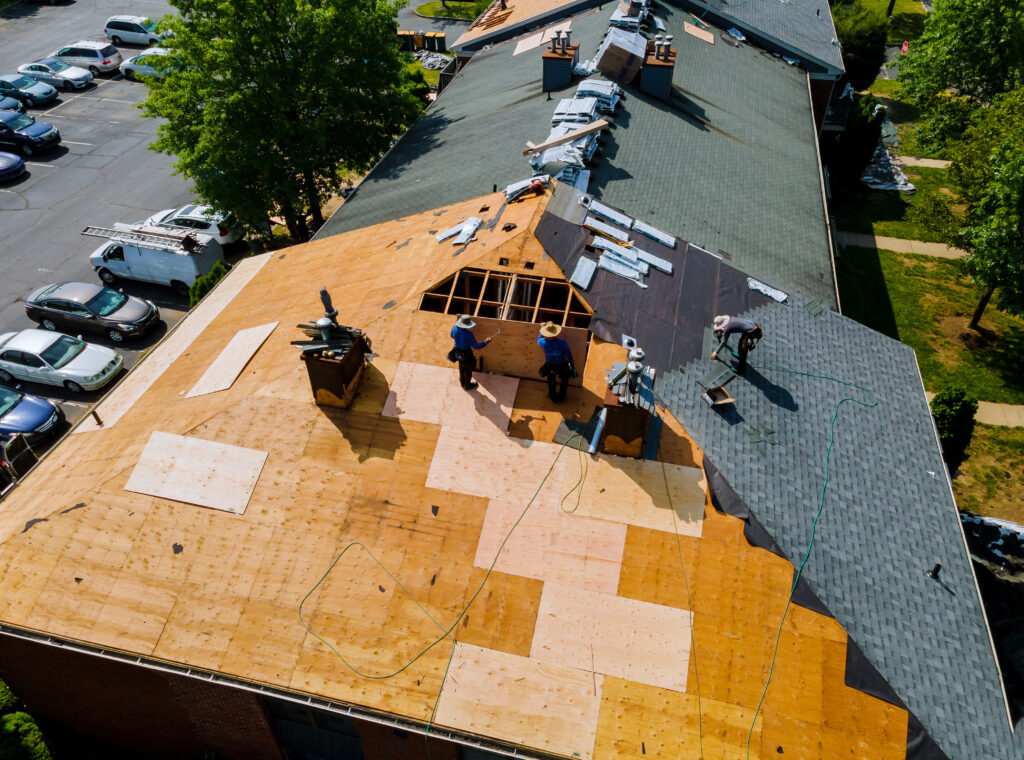Preparing the exterior of your home to the full potential of severe weather ensures your house and family will be safe and sound. Most damage brought on by hurricanes, storms, and floods can be reduced significantly in homes, especially with preparation before it all starts. Fortifying the structural framework of your home and securing everything outside the dwelling will limit the scope of expensive repairs and even ensure that your house is safer to remain in.
In this article we will discuss all the steps to prepare your home’s exterior for severe weather conditions and be safe for anything critical that might come up.
First Step: Pre-Storm Preparation
1. Home Inspection
A. Roof Check
Check on the shingles of your roof; any loose, damaged, or missing will require fixing before the onset of the storm season to prevent leaks and further damage during the stormy seasons. Fix or replace to eliminate leakages. Clean up your gutters and downspouts of all debris that might be on them, allowing proper water drain without creating clogs to prevent floods.
B. Windows and Doors
Check for cracks in caulk around windows and doors. Apply new caulk or replace the old as necessary to ensure that this seals out the wind and water
C. Foundation Drainage
Ensure that the ground around the house foundation slopes downwards, then rainwater away from your place, avoiding any flooding through it.
D. Lightweight Items
Tie up or bring inside outdoor furniture, decorations, and other light items that can become missiles in strong winds. They are light objects that may cause significant damage if they get tossed around.
E. Big Items
For larger, immovable outdoor items, like grills and sheds, tie them down to prevent becoming projectiles or getting tossed around by strong winds.
2. Fortify Weaker Spots
A. Windows and Doors
Storm Shutters or Plywood- Put up storm shutters or cover your windows with plywood to strengthen them in the event of flying debris. This serves a break-proof and no water damage. Reinforce doors with deadbolt locks, and take it one step further to install steel or fiberglass that can also protect doors against being opened and destroyed when the storm strikes.
B. Roof and Gutters
Securing Roof Fixtures: Roofs should also be assessed, to check if fixtures like vents, chimneys, and skylights are tightly held. Such loose fixes are easily thrown off in a strong gust of wind, which is the root of leakage and additional damage.
C. Clean Gutters and Examine Downspouts:
All debris should be removed so that water can flow into gutters and down the downspout. A good downspout discharges water away from a house foundation six feet
Second Step: Emergency Readiness
1. Emergency Kit
Ensure you have an emergency kit with essential supplies such as flashlights, extra batteries, a first aid kit, non-perishable food, and a minimum of 72 hours of water. The kit should be easily accessible to all family members and checked regularly to ensure it remains fully stocked and functional.
2. Critical Documents
Store important documents like identification, insurance policies, medical records, and legal papers in a waterproof container. This will ensure they remain protected from potential water damage during emergencies like floods or storms. Consider keeping digital copies of these documents as well.
3. Evacuation Routes
Establish clear and safe evacuation routes for all household members. Make sure everyone is aware of these routes and the meeting point in case of evacuation. Practice these routes with your family so everyone feels confident during an emergency.
4. Assign Roles
Designate specific roles for each family member to help streamline the emergency response. For example, one person can be responsible for grabbing the emergency kit, another for helping younger children or elderly family members, and someone else can ensure pets are evacuated safely.
5. Communication Plan
Create a communication plan that includes emergency contacts and meeting places. Make sure all family members know who to contact in case of separation and where to meet if you cannot return home. Ensure everyone has access to a charged phone or alternative communication method.
Third Step: Insurance Review
A. Check Your Policy
It’s important to regularly review your insurance policy to ensure it covers extreme weather events such as hurricanes, floods, and tornadoes. Confirm that your coverage limits are sufficient to restore or rebuild your home if needed. This will help you avoid unexpected expenses if a disaster strikes.
B. Flood Insurance
Remember that standard homeowners insurance usually does not cover flood damage. If you live in a flood-prone area, consider purchasing additional flood insurance to protect your home and belongings from water damage.
C. Wind and Storm Damage
Verify if your insurance policy covers wind and storm damage, especially if you live in regions prone to hurricanes or tornadoes. If this coverage is not included, inquire with your insurance provider about adding it to your policy.
D. Contact Information
Keep your insurance agent’s contact details readily available in both digital and physical formats. Having this information on hand will allow you to quickly reach out for assistance or file claims in the event of an emergency.
Fourth Step: Post-Storm Procedures
A. Assessment of Damage
i. Examination of Property
Once the storm has passed, carefully enter your property to assess which areas have been affected. Inspect the roof, windows, doors, and outer walls for any visible damage.
ii. Photography and Video Documentation
For insurance purposes, take photos or video recordings of the destruction. Capture all the affected areas, both inside and outside the house, to create a legitimate record for claims.
B. Cleaning Processes
Remove Debris with Caution
Carefully remove fallen branches, broken glass, or damaged furniture from your property. Avoid touching any downed power lines, as they could pose an electrical hazard.
Address Water Damage
If your home has been flooded or has water damage, begin drying out the affected areas immediately. Use fans, and dehumidifiers, or hire professionals to prevent mold growth and further damage to the structure.
Conclusion
This guide explains the most important steps that any homeowner should take to prepare their home for an extreme weather event. It includes checking your home for weaknesses, securing any outdoor furniture and other loose items, boarding up the windows and doors, cleaning gutters, and looking over your insurance policy.
We also covered how indispensable it is to create an emergency kit and come up with an emergency plan. After the storm, inspecting the damage and immediate initiation of clean-up processes will ensure your property is safe and secure.
Preparation for severe weather never comes too early. Take action today to protect your home with these steps, so you’re ready when the next storm arrives. Proactive measures can significantly reduce damage and keep your family safe, ensuring peace of mind when facing unpredictable weather.
Protect your home from severe weather with expert exterior solutions from Tristate Exteriors! Whether it’s strong winds, heavy rain, or snow, our team is here to ensure your home’s exterior is ready to withstand the toughest conditions.
🌟 Don’t wait for the storm to hit! Check out Tristate Exteriors today to learn more about preparing your home’s exterior for severe weather. Schedule a consultation now and get peace of mind knowing your home is fully protected!




